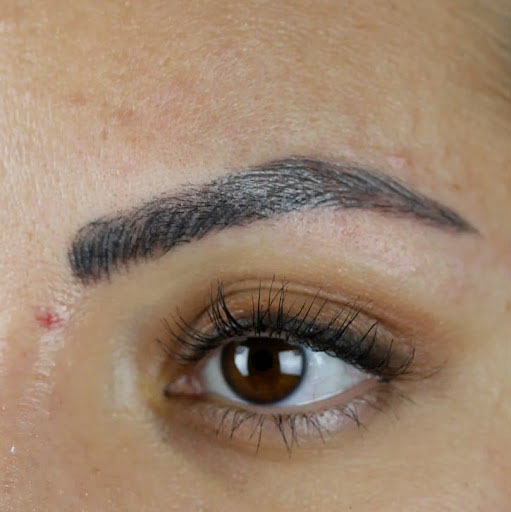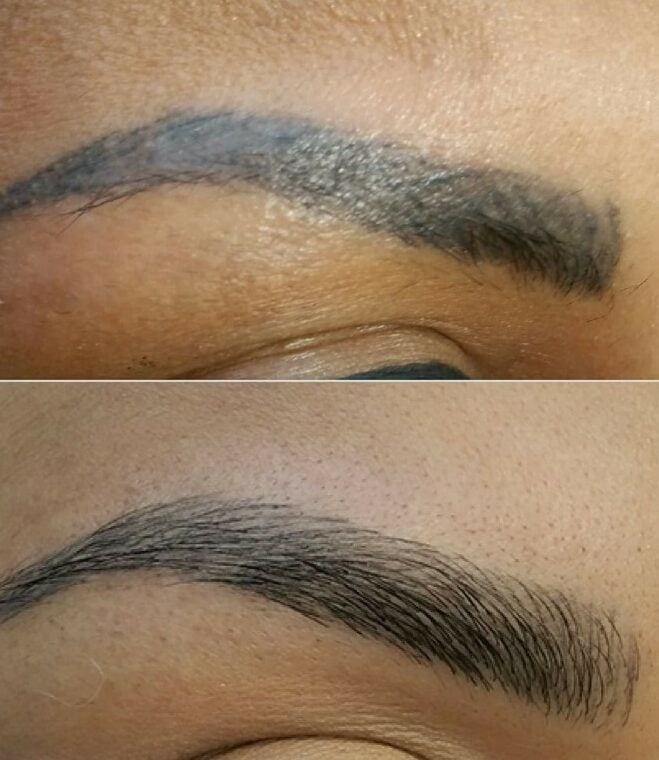Microblading has become a popular trend in the beauty industry, promising to give you perfectly shaped and filled eyebrows without the hassle of daily makeup application. However, like any cosmetic procedure, there are risks involved, especially when it is not done correctly. In recent years, there have been numerous cases of microblading gone wrong, leaving people with botched eyebrows and even permanent scarring.
The Basics of Microblading
Before we dive into the dangers of poorly done microblading, let's first understand what it is and how it works. Microblading is a semi-permanent cosmetic tattooing technique that uses a handheld tool with tiny needles to create hair-like strokes on the eyebrows. These strokes are filled with pigment, giving the appearance of fuller and more defined eyebrows.
The process involves numbing the area with a topical anesthetic and then using the tool to make small incisions in the skin, depositing the pigment into the upper layers. The results can last anywhere from 1-3 years, depending on your skin type and aftercare.
The Risks of Poorly Done Microblading
While microblading can give you beautiful and natural-looking eyebrows, it is not without its risks. When done incorrectly, it can lead to a range of complications that can have long-lasting effects on your appearance and overall health.....

Poorly done microblading can result in:
- Uneven or asymmetrical eyebrows: One of the most common issues with poorly done microblading is uneven or asymmetrical eyebrows. This happens when the technician does not have proper training or experience, resulting in strokes that are not aligned or filled in correctly.
- Overfilled or unnatural-looking eyebrows: Another common problem is when the technician uses too much pigment, resulting in eyebrows that look too dark or unnatural. This can be especially problematic for those with fair skin or light hair.
- Infections and allergic reactions: As microblading involves breaking the skin, there is a risk of infection if proper hygiene practices are not followed. Additionally, some people may have allergic reactions to the pigments used, leading to redness, swelling, and itching.
- Scarring: In severe cases, poorly done microblading can result in scarring. This can happen if the technician uses too much pressure or goes too deep into the skin, causing damage to the underlying tissues.

The Importance of Choosing a Qualified Technician
The key to avoiding these risks is to choose a qualified and experienced technician. Microblading is not a regulated industry, meaning anyone can offer the service without proper training or certification. This is why it is crucial to do your research and choose a reputable and skilled technician.
When looking for a microblading technician, consider the following:
- Certification and training: A qualified technician should have proper training and certification from a reputable organization. They should also be up-to-date with the latest techniques and safety protocols.
- Before and after photos: Ask to see before and after photos of their previous clients. This will give you an idea of their skill level and the results you can expect.
- Cleanliness and hygiene practices: Make sure the technician follows proper hygiene practices, such as using disposable tools and wearing gloves. The studio should also be clean and well-maintained.
- Client reviews: Read reviews from previous clients to get an idea of their experience and satisfaction with the technician's work.
What to Do If You Have Had Poorly Done Microblading
If you have already had microblading done and are unhappy with the results, do not panic. There are steps you can take to correct the issue and minimize any potential damage.
Here's what you can do:
- Contact the technician: The first step is to contact the technician who did your microblading and express your concerns. They may offer a touch-up session or refund if they are at fault.
- Consult a dermatologist: If the issue is severe, it is best to consult a dermatologist who specializes in cosmetic tattooing. They can assess the damage and recommend the best course of action.
- Be patient: It is essential to be patient when dealing with poorly done microblading. It may take time for the pigment to fade or for any scarring to heal. Rushing into corrective procedures can make the situation worse.
The Bottom Line
In conclusion, while microblading can give you beautiful and natural-looking eyebrows, it is crucial to choose a qualified and experienced technician. Poorly done microblading can result in a range of complications, including uneven eyebrows, infections, and scarring. If you have had a bad experience with microblading, do not hesitate to seek professional help and be patient in the healing process.






